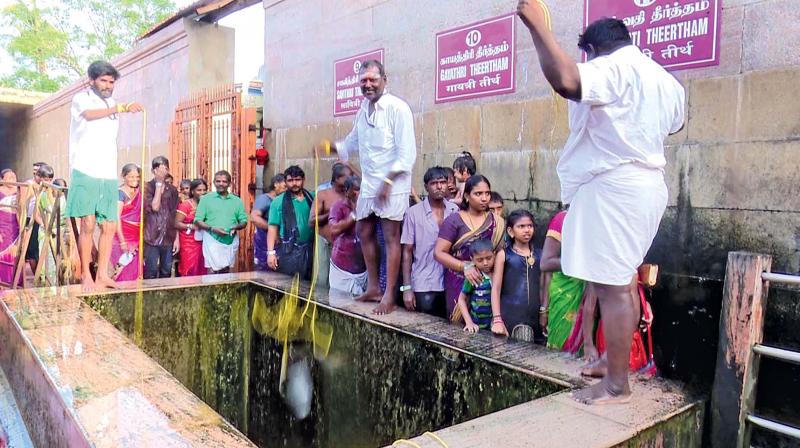Beating the drought: Use less to save more water
Rameswaram temple practice shows the way to conservation.

RAMESWARAM: When most parts of Tamil Nadu are reeling under a severe water scarcity, the 22 perennial wells (‘Punitha Theerthangal’) in the sprawling Sri Ramanathaswamy temple complex in the pilgrim-island of Rameswaram here, come as a happy counter-example.
While Ramanathapuram has been a perennially drought-hit district, this year, locals say that even water-bodies in the island have virtually gone dry and water levels in the wells hitting a new low.
However, the 22 wells inside the temple complex, considered sacred, continue to be a perennial source of water despite thousands of pilgrims lining past them to have a symbolic dip in each of those wells before offering worship to Lord Shiva, who presents as Ramanatha Swamy and his consort Parvathavarthini Ambal.
How is this phenomenon possible? Traditionalists and astrologers like Nagendran say that the area around the sanctum-sanctorum is imbued with a divine quality as Lord Ram himself worshipped Lord Shiva here, to get rid of his ‘Brahmaharthi Dosha’ for having killed a Brahmin King in Ravanna in Sri Lanka. The Shiva Linga is believed to have been shaped from the seashore mud by Seetha on their return.
This traditional belief apart, what is more empirically significant, even according to Nagendran, is that the water from these wells are still fetched in the centuries-old way of lifting little quantities in buckets tied to ropes. There is an in-built economic usage of water in this method that irrespective of the number of pilgrims who have a dip daily, the wells continue to be replenished at all times, he explained. The moral of the story is: Use less to conserve more water.
A visiting German tourist, Johnshon, was also amazed at this phenomenon of the 22 wells being perennial and their water having a sweet taste. “There is drought all around, yet these wells are brimming with water, it is amazing,” said Johnson. The underlying message is groundwater if used prudently, can be a limitless source.

